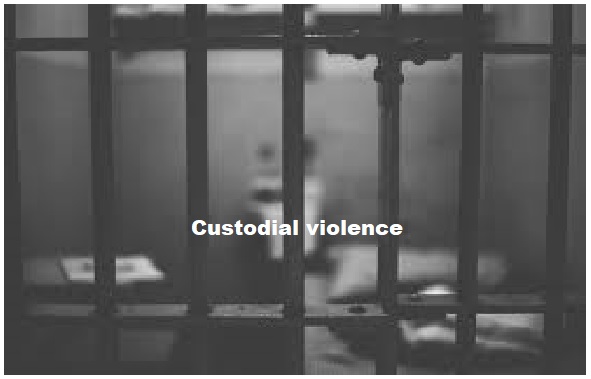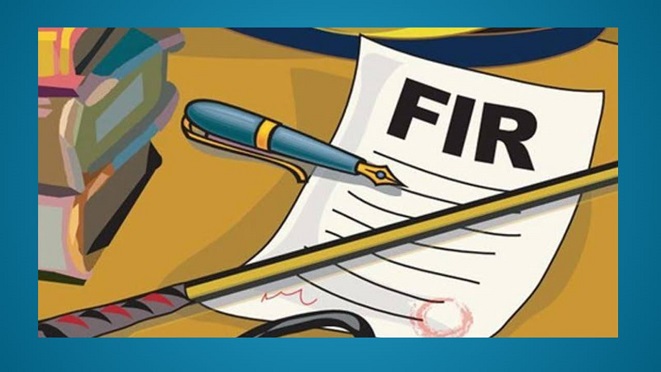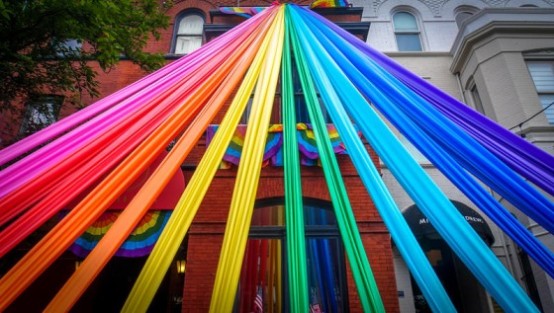Many complaints of police excess and torture of suspects in police custody have been made in the past. Lately, such complaints have assumed wider dimensions, as the incidents of torture assault and deaths in police custody have increased proportionately. The rising human rights consciousness, the role of press, human rights activists, NGOs have all resulted in increasing attention to custodial deaths only recently.
Arun Shourie once observed: ‘The victims were invariably poor. Several of them hauled in on no formal charges at all. Even in the case of persons who were arrested, in an overwhelmingly large number of cases they were all accused of petty offences. In fact, the victims of custodial violence are people from poor and backward sections of the society with little political or financial power to back them. Personal enmity, caste and political considerations and at times pecuniary benefits become important considerations for custodial deaths rather than investigation of cases.’
Custody means guardianship and protective care. Many times it is also applied to stipulate arrest or incarceration it does not carry any sinister symptoms of violence during custody. There is no civilized law that presupposes custodial cruelty which is an inhuman trait that springs out of a perverse desire to cause suffering when there is no possibility of any retaliation. Moreover, it is a senseless exhibition of superiority and physical power over the one who could be controlled. It is one of the worst crimes in the civilized society, governed by the rule of law and poses a serious threat to an orderly civilized society.
The prisoners are living beings and they also have human rights. Therefore prison torture is the confession of the failure to do justice. So for the prisoners the fundamental rights are an enforceable reality though restricted by the fact of imprisonment. Thus the death of a person in custody whether of the Police or Judicial amounts to the ‘Custodial Death’. The State of Uttar Pradesh leads the chart of deaths in judicial custody by a significant margin followed by Punjab and Bihar.
MEANING
Custodial violence implies any kind of violence that occurs in the custody which is not endorsed by the law of the land. The nature of violence may be subtle or extreme like abusing, emotional or physical violence, thrashing and beating, rape or even death while the nature of custody could be judicial, police or under any institution obliged to take care of the inmates like hospitals, homes etc. or may be in the hands of terrorist organizations or armed groups or insurgents etc.
As per the Section 167 of the Code of Criminal Procedure there are two types of custody i.e. police custody and judicial custody. Section 167 (1) of Crpc states that “the magistrate to whom an accused person is forwarded under this section may whether he has or not has jurisdiction to try the case, from time to time, authorize the detention of the accused in such custody as he may think. Provided that the magistrate may authorize the detention of the accused person, otherwise than in the custody of the police, beyond the period of 15 days if he is satisfied that adequate ground exist for doing so.
Thus as per Section 167 (1) of Crpc ‘police custody’ can be granted for a maximum period of fifteen days only’. Police custody basically means police remand for the purpose of interrogation. In law actually a police officer has two occasion to keep a person in its custody; firstly, from the period when he arrests a person till he produces the said person in the court i.e. first 24 hours of the arrest of accused. Secondly, when police gets, remand from court after producing the accused in the court which can be extended up to a maximum period of fifteen days, thereafter, a person is sent in judicial custody which in general terms means jail or prison, where the accused remains in custody till he gets bail or if convicted and sentenced to jail till the completion of sentence.
GENESIS OF CUSTODIAL VIOLENCE
The issue of custodial violence is an old concept. The incidents of torture, death and other excesses in police custody or prison are not a new phenomenon. It has not emerged suddenly and come to the fore at once rather it has been in the world for ages. The law enforcement agencies have been practicing this on the prisoners, criminals and the wrongdoers.
The phenomenon of custodial crime is not new in India. We have references of torture and violence since the Vedic age 2000-1400 B.C. Then in the Epic period i.e.1400-800 B.C. torture was practiced on prisoners by the police and it was widely prevalent in various forms in age of laws and philosophy in 800 B.C.-320B.C. Even Kautilya in Arthsastra speaks volumes about the then prevailing system. He has mentioned about various kinds of torture such as burning of limbs, tearing by wild animals, trampling to death by elephant and bulls, cutting of limbs and mutilation etc. Even Manu-the law giver emphasized on the necessity of torture to protect the society from the hands of the criminals. It was in the Buddhist period i.e. in B.C. 300-300 A.D. the humanitarian ideals came to the fore and torture in any form was strictly forbidden.
During the Gupta period in A.D.320-500 it was important to establish facts against the prisoners and if the facts were established trial by ordeal was common. If we observe we find in the Mohammedan period the Shariat laws were applied to crimes which seem brutal. The basic principle of Muslim Criminal Jurisprudence called as Shariat laws included cutting of thieves hands, life for life, tooth for tooth which is still followed in the Islamic country.
Thereafter we can observe the British era where custodial violence was a norm. Men, women children and political workers were caught, beaten and tortured to make them confess to the offences without committing them. If they did not provide the desired reply they were subjected to torture. Some of the examples of torture include the naked lying on ice, the denial of food or insufficient quantity of food, excess physical work and physical beatings.
The British Government established judiciary, police, jails and all the laws were made for their own benefit and convenience. The ‘Prison Act’ was passed in the year 1894 which remains unchanged. The Act gives vast powers to jail officials to punish prisoner if they break jail rule. Hence it proves that the mindsets of both police and the rulers remain same only the power has shifted from foreign ruler to our native ruler.
POLICE BRUTALITY
The police sub-culture is the sociological side of the same coin. The policemen react to a particular situation in a peculiar manner which is different from how other people would react to it. Powers are granted to the police in order to enable them to enforce the law and protect people effectively. However, many times they are under pressure to solve a case at the earliest and sometimes the greed which makes them use it illegally.
Article 21 under the Constitution of India is an inbuilt guarantee against torture or assault by the state or its functionaries. The torture and assault have become a part of sub-culture of our police ways. It is due to this that in many cases custodial deaths have been found to be little short of ‘custodial murder’.
Hence, the increasing cases of custodial violence raises serious questions about the credibility of the Rule of Law and administration of criminal justice system. Every offender has a right to be tried and punished in accordance with the law and any punitive action taken outside the ambit of law is illegal. It does not matter how grave the crime is and how dangerous the criminal is they have all the rights to be treated with human dignity.
RECENT CASES OF CUSTODIAL VIOLENCE
Recently the daily news from across the country has thrown up story after story of police misbehavior which is confirmed by the video clippings in the social media day after day. A horrific double murder in Tamil Nadu, grossly defiling behaviour towards women who came to complain in UP, four alleged escapees gunned down by police personnel in Telangana, a father tortured to death before his 10 year old son in Hapur, UP.
According to the statistics these incidents of bad behavior by police look like an epidemic and reveal yet another unseen side of brutality and depravity. As per the data issued by National Crime Records Bureau approximately 853 custodial deaths happened between 2010 to 2018; 70 of them in 2018 alone whereas the National Human Rights Commission puts the death figure much higher upto 1,636.
These incidents prove that the police personnel are in practice of brazen disobedience of law and thus they ignore the statute, laid down processes and Supreme Court guidelines also. Due to this a lot of illegality seems to have morphed into an accepted practice for example the hiding of ‘encounter’ stories that regularly surface.
So whether it is while dealing with so-called insurgents, sandalwood smugglers, alleged rapists on the way to court, or most recently, the UP “encounter” of gangster Vikas Dubey and several of his accomplices all these stories have a common ring attached. Every story goes like this that the wicked were in custody and they tried to escape. A pistol was snatched; shots were fired; the runaway was killed in self-defence and few policemen were injured. Fact or fiction, end of the story.
The incident of death of a father and son due to the torture in the police station near Thootukudi, Tamil Nadu has raised serious questions about the conduct of police. The State government now wants the CBI to probe the case. In this case a District Judge sought for a detailed inquiry. He calls it as a ‘disturbing incident of custodial torture’ in his report to the Madras High Court.
These incidents are deplorable and indicate towards a wider culture of indemnity that prevails in the law and order system which gives courage to the police officials to overpass the due process and perpetrate violence on citizens in the expectation of getting away with it.
Hence we see that it is not incidental that the recent spate of complaints of police brutality has surfaced in the backdrop of the restrictions imposed by the government to contain COVID-19. In fact the pandemic has evidently become a pretext in cases like these to impede the rule of law. A number of cases of police excesses, including thrashing of migrant workers, hawkers and shop keepers have been reported during the lockdown.
THE INDIAN CONSTITUTION’S TAKE ON CUSTODIAL VIOLENCE
The Constitution of India very clearly states under Article 21 that ‘no person shall be deprived of his life or personal liberty except according to the procedure established by law’. This article has a very crucial role in the cases of custodial violence which may even lead to death. It not only acts as a shield to the accused and his relatives but also includes the right to claim compensation by the victims. If a person is arrested unlawfully, he can file a writ petition in the High Court under Article 226 or the Supreme Court under Article 32.
In a landmark judgement, D.K.Basu v. West Bengal State, the court thus observed that torture is impermissible and offensive to Article 21. Punishment itself has an element of torture which is unconstitutional.
The issue of custodial death later got a huge significance. In this way the citizens of India were always reminded with rights and powers such as Article 14, 32 and 21.
In another case, Nilabati Behera v. State of Orissa, the court took the letter written by the victim’s mother as a petition. The letter stated that her son Suman Behera was beaten to death in the police station. The petitioner’s son was arrested for allegedly committing a theft. His body was found near railway tracks. His mother sought for compensation under Article 21.
The court in many cases has clearly stated that in the matters of custodial violence the onus of proof lies on the police and not on the victim’s kith and kin.
PROCEDURE FOR INQUIRY AND THE BIAS
The Supreme Court in a famous judgement of State of MP v. Shyamsunder Trivedi commented that the ‘ties of brotherhhood’ within police stall fruitful investigation in cases of custodial violence.
For this reason the investigation is later handed over to independent agencies like CBI or Special Investigation Teams, mostly as a result of cases fought by the relatives of the victims. But such a subsequent transfer of probe cannot assure concrete results, if the investigation in the initial crucial stages of evidence collection such as autopsy, inquest etc., has been manipulated. Thus to take care of this problem, the law has envisaged a process of parallel Magisterial Inquiry, immediately after the incident.
Section 176(1A) of the Code of Criminal Procedure is a general empowering provision which was inserted after amendment in 2005 wherein the Magistrate is empowered to hold inquests with respect to an unnatural death, may hold an inquiry into the cause of death in addition to the investigation held by the police officer.
Another fact to be noted is that such inquiry can be held either by an Executive Magistrate or Judicial Magistrate. Besides Section 176(1A) is a special provision to deal with cases of death, disappearance or rape in police custody.
The provision says that in such cases, the Judicial Magistrate or the Metropolitan Magistrate within whose local jurisdiction the offence has been committed shall hold an inquiry in addition to the inquiry or investigation held by the police. Section 176(5) mandates that the Magistrate should hold such inquiry within 24 hours of the death of the person, forward the body with a view to it being examined to the nearest Civil Surgeon and if it’s not possible to do so then the reason must be recorded in writing. This is further regulated by the guidelines issued by the National Human Rights Commission which has set two month deadline for the completion of enquiry by Magistrate.
NON-COMPLIANCE OF SECTION 176(1A)
The provision despite being mandatory in nature is rarely complied. The Supreme Court issued notice on a Public Interest Litigation petition, filed by the activist Suhas Chakma, seeking a directive to all States/ UTs for strict implementation of Section 176(1A) in January 2020. It stated that out of 827 cases of death or disappearance of persons in police custody between 2005 and 2017 the judicial inquiry was ordered only in 166 cases i.e. 20% of the total cases.
REGISTRATION OF F.I.R
The Registration of FIR in cases of custodial death is mandatory. The Supreme Court clarified in the decision Lalitakumari vs. Government of UP that the registration of FIR is mandatory under Section 154 of the Code, if the information discloses commission of a cognizable offence and no preliminary inquiry is permissible in such a situation. Section 176(1A) speaks about regular police investigation in case of custodial death, and the Magisterial Inquiry is envisaged as in addition to police investigation.
The Law Commission of India anticipated this problem of police delaying lodging of FIR cases of custodial deaths, and thus suggested in its 152nd Recommendation about the insertion of a new provision to enable any person to approach a judicial authority on the failure of police to register FIR. This was proposed to be inserted under Section 154A in the Cr.PC.
INTIMATION TO NATIONAL HUMAN RIGHTS COMMISSION
In 1993, the National Human Rights Commission had issued general instructions that within 24 hours of occurrence of any custodial death, the Commission must be given intimation about it. All reports including post-mortem, video graph and magisterial inquiry report must be sent within two months of the incident.
The NHRC has issued guidelines to all the States to video-film the autopsy proceedings in cases of custodial deaths and send the cassettes to the Commission. The aim of video-filming and photography of postmortem examination is to record the detailed findings pertaining to marks of injury and violence which may suggest custodial torture; to rule out any undue influence or suppression of material information; to facilitate an independent review of the post-mortem examination report at a later stage if required.
The Commission after ascertaining the views of the States and discussing with the experts in the field and taking into consideration the U.N. Model Autopsy protocol, has prepared a Model Autopsy Form for custodial death cases.
PROSECUTION POLICE OFFICERS ACCUSED OF CUSTODIAL TORTURE
The Supreme Court in Devinder Singh and others v. State of Punjab through CBI held that the protection of sanction under Section 197 CrPC was not available for offences which have no connection with official duties. The bench comprising Justices V Gopala Gowda and Arun Mishra upheld the argument of prosecution sanction for prosecution was not required in cases of fake encounter and custodial torture. Protection of sanction is an assurance to an honest and sincere officer to perform his duty honestly and to the best of his ability to further public duty.
However, authority cannot be camouflaged to commit crime, the bench said. The Apex Court observed that public servant is not entitled to indulge in criminal activities, and that the protection under Section 197 CrPC has to be construed narrowly and in a restricted manner. The offence must be directly and reasonably connected with the official duty to required sanction. It is not a part of official duty to commit offence.
The Court further added that it has to be proved that the act was intrinsically connected with official duties under Section 197 Cr.P.C but such relation to duty should not be a fanciful or pretended claim.
REMEDIES
Firstly, custodial torture should be declared an offence. This could be brought in by virtue of a special law. Secondly, on various occasions the cases of custodial torture could be prevented if law-enforcing agencies acted in accordance with the existing laws relating to arrest and detention. The rules established by the Apex Court should be applied without failure and those who fail to comply must be prosecuted.
Thirdly, the public and the concerned professional groups, which include rights groups and the media as well, must closely monitor police practices to see that government promises are upheld. Fourthly, there should be a check on the police system by any organization, agency, political party or the opposition which would see to it that the Director General of Police submits a report to the legislative assembly and an investigative report on every case of custodial death and torture.
Lastly, the Central Government should be urged to ratify the UN Convention against Torture and Other Cruel, Inhuman and Degrading Treatment or punishment. The government has failed to ratify the treaty on feigned grounds that existing laws are good enough to prevent custodial torture which is evidently not the case. Despite numerous concerns and guidelines issued by courts all over India torture would not have persisted ceaselessly as it does today.
CONCLUSION
There has been huge protest after the death of George Floyd at the hands of police in the US across the globe. This gruesome incident paved a crucial way towards condemning police brutality and rightfully demanding a humane police force.
It’s worth appreciation that the prominent voices of India have also condemned the grotesque injustices against Blacks in the US but same people remain silent in their own country. We rarely get to hear or see any news wherein the cops are being convicted for custodial deaths. But this situation is being questioned that why there has been a surge in custodial deaths and why the number of conviction happens to be zero and thus signifying towards an urgent narrative demanding meticulous examination of systemic flaws rooted in a culture of impunity, corruption, discrimination, eroding justice system and power play compounding to violation of human rights.
Therefore, there should be an end to the dispensation of police so that the ones responsible are convicted. The Supreme Court’s 2006 order on setting a police complaints authority gives freedom to every citizen to file a complaint against policemen for any act of misconduct has not been practiced so far except for a few States.
Then finally we can think about police reforms as suggested in reports of Law Commission and taking into consideration international jurisprudence thinking about all the conventions that are yet to be ratified and instituting domestic legislation for prevention of custodial violence. Hence to restrict the behaviour and misconduct of policemen a deeper analysis of law shall be done.
Also Read: Rights of undertrial prisoners in India







 inclusion of vocational subjects. We have seen that students are not made to study or learn the work of gardeners, carpenter, etc thinking these subjects as non-mandatory. These subjects are introduced because at this stage of time children are not aware of what will be their interest/profession in the future.
inclusion of vocational subjects. We have seen that students are not made to study or learn the work of gardeners, carpenter, etc thinking these subjects as non-mandatory. These subjects are introduced because at this stage of time children are not aware of what will be their interest/profession in the future.




